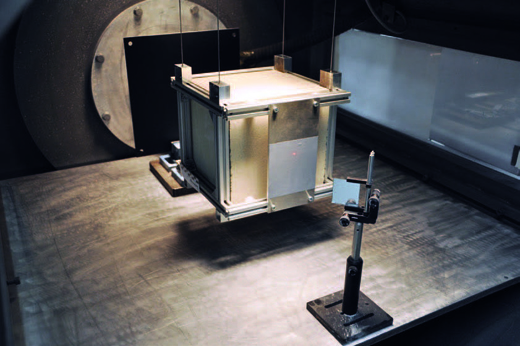

Impact cratering is a fundamental geological process. At Fraunhofer EMI, we use experimental methods to analyze those physical processes which occur under impact of celestial bodies. During these experimental examinations, projectiles are accelerated by means of two-stage light-gas accelerators to velocities of up to eight kilometers per second to have them impacted on rock samples. Compared to the real planetary scale, the laboratory experiment is heavily scaled. Impact cratering as well as ejection of the target material occur within micro- and milliseconds and can only be experimentally analyzed with the help of special high-speed diagnostics. For example, high-speed cameras and special sensors are used to characterize the ejection process as well as pressure amplitudes in the target material caused by the impact.
The impact of a mass at high velocity is supposed to change the trajectory of an object to be deflected. The material which is ejected in the opposite direction of the impact direction supplies an additional momentum transfer to the target. The lower figure shows the experimental setup, where that target is fixed within a ballistic pendulum. The displacement of the pendulum is measured in a non-contact manner with a laser vibrometer.
The acceleration facilities at EMI combined with special high-speed dynamics, numerical simulations and material characterization across a wide range of strain rates yield novel scientific insights into the high-dynamic and complex process of impact cratering. Within this context, the experimental and numerical models are permanently advanced and employed in basic research. Furthermore, these methods have the potential of industrial application.